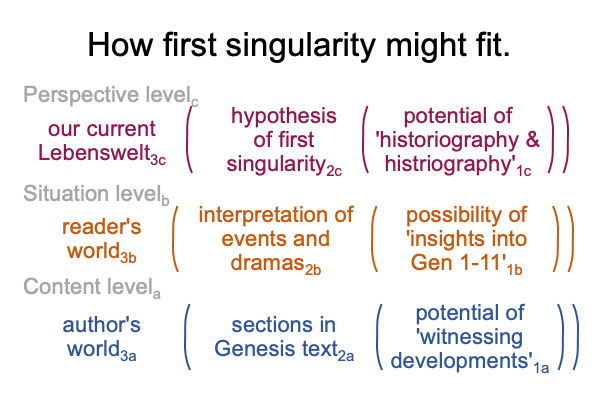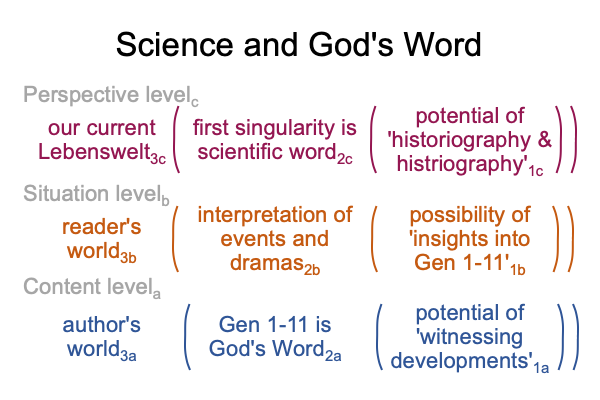Looking at the Book (2015) Genesis: History, Fiction or Neither? (Part 31 of 38)
0111 The word, “histrionics”, comes from the Latin word, “histrio“, for actor. “Histrionics” covers everything high maintenance about the theater.
The word, “historiography”, comes from the Latin word, “histor“, for knowing. “Historiography” is a map (graphic) of knowing. Today, it refers to the art of writing history.
0112 Sparks plays this game for the word, “genre”, and arrives at a note of caution: histriography (a map of theatrical events) is not the same as historiography (a knowledgeable map of history).
0113 But, where is the knowing when it comes to ancient history?
Wasn’t everyone in the West surprised at the realization that Gen 1-11 is not plainly historical? Plus, it has a lot in common with the origin literature of the ancient Near East.
Is there a genre that hybridizes histriography and historiography?
Maybe, we may need to figure out a new label.


